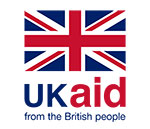Like the rest of the world, the United States is experiencing more frequent and severe climate related catastrophes. In the past ten years alone, the US has recorded over a hundred weather and climate driven disasters such as hurricanes, cyclones, and wildfires, resulting in economic costs of at least $1 billion per event. The magnitude of impact of this kind of disasters is not only influenced by the type of climate hazard, but also linked to pre-existing vulnerabilities of affected communities and groups. The variation in social vulnerability depends largely on wealth status, race/ethnicity, age, special needs or disability, gender, employment, among others. This suggests an urgent need to explore the issue of inclusion in climate emergency contexts.
Minority groups and low-income communities are disproportionately impacted
A recent climate vulnerability study by the US Environmental Protection Agency identifies individuals from minority backgrounds and households with low per capita income as the most at-risk populations across the country, with the highest likelihood of living in areas prone to be affected by climate risks.

One of the challenges facing minority groups, especially those in low-income brackets, is the lack of quality affordable housing. Residents often live in housing built on flat and low-lying land, which are often old, constructed with poor quality materials and predisposed to coastal floods. Their low-income status also means fewer resources to prepare for climate shocks and recover from them. Building climate resilience strategies for at-risk communities and groups is crucial for effective disaster preparedness and response to climate-related shocks.
Low-and-middle-income countries (LMICs) offer lessons for the design of inclusive, people-centred EWS
Early warning systems (EWS) are a key element of risk reduction and management strategies. Mobile and digital technologies play a key role in enhancing the capabilities and effectiveness of EWS, especially when it comes to collecting and analysing meteorological data and disseminating warnings. EWS require hyper localised data to measure and monitor not just high-level risks, but also threats even in the most remote areas. Such data, which can be generated by satellite mapping or smartphone sensors for instance, is also crucial to support accurate and timely predictions. In the case of a disaster, warning messages can then be sent via mobile phones to at-risk individuals and adequate assistance can be provided to enable them respond accordingly.
Inclusive and people-centred EWS are those that incorporate specific needs of communities and enable them to prevent, reduce or transfer risks, and adapt or respond to disasters. LMICs have some of the most innovative, people-centred EWS, which may provide valuable lessons for enhancing systems in high income countries like the US. The US has arguably some of the most advanced EWS, but these systems are not always well integrated from the federal level down to counties or municipalities. In the US, like in many developed countries, the peculiar needs and capacities of vulnerable groups are not always taken into consideration in designing EWS.
In LMICs, innovations are still created based on low-cost and low-tech solutions. Technologies like USSD, for example, are very relevant and will continue to be so for some time because they are user-friendly and easily accessible by people with basic feature phones. In low-resource environments, the diverse needs and vulnerabilities of communities are more likely to be taken into account. This is an important learning for developed markets such as the US. If digital solutions like those used in EWS for climate resilience are to serve marginalised populations, they should take into account the specific challenges they face and must incorporate, if needed, low-cost and low-tech technologies
Next steps
The Central Insights unit at GSMA Mobile for Development is currently working with the UK ‘s Science and Innovation Network on a research project to identify gaps in EWS for climate hazards in the US, focusing on two selected regions – Southeast and Alaska. Building on examples of mobile and digital technologies deployed in LMICs that use community-based approaches for EWS to reach underserved groups. The research will draw lessons on how mobile and digital technologies can help address any gaps identified and increase community participation and inclusion in climate mitigation and disaster risk reduction strategies.
Please do reach out to [email protected], to find out more about the project, or to share insights with us from similar work conducted.
The Central Insight Unit research work is funded by the UK Foreign, Commonwealth & Development Office (FCDO), and supported by the GSMA and its member

s.


